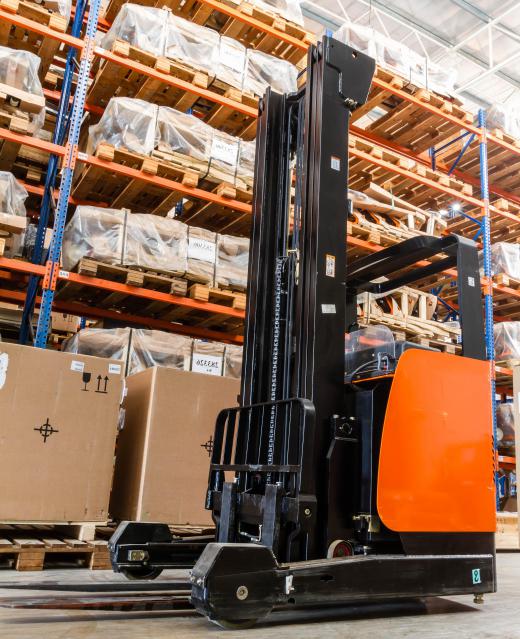Forklift tires come in a variety of sizes and styles, from pneumatic rubber tires to solid rubber tires that are slick and smooth. The typical use of the forklift determines the type of forklift tires that are installed on the machine. While all-purpose and general-purpose forklifts typically use a solid rubber tire when operated indoors, the same forklift model when used outdoors will require a tire with tread. Large tractor-type forklifts, such as the type used in lumberyards, often require an air-filled tire, while the same model of forklift used in an indoor steel mill may use solid rubber forklift tires.
As a rule, forklift tires are usually solid rubber construction. This is due to the tremendous amount of weight the forklifts are required to lift. An air-filled or pneumatic-type tire could potentially blow out under the heavy load. If one tire would happen to blow out, it could result in an off-balance condition where the forklift ends up tipping over. Some styles of forklifts, however, must use the pneumatic tires due to the conditions the forklift is operated in.

Lumberyards, railroad depots and construction sites often use tractor-type forklifts that are forced to operate in sand, mud and gravel. This requires a soft, floatation-type treaded tire to prevent the heavy forklift from sinking into the earth and becoming stuck. When the forklift is used entirely indoors, it is able to operate with solid rubber tires in a slick tread design. The slick tire actually gives better traction on concrete and tile floors than a treaded tire design.
While the typical black solid rubber forklift tires are found in warehouses and on loading docks all around the world, forklifts used indoors in food preparation and other types of clean working environments often use a white, non-marking rubber tire. These forklift tires do not leave black marks on the floor, as the tires slide on the surface. Often constructed of a softer rubber compound, these forklift tires occasionally squeak as they turn corners, much like a pair of rubber-soled sneakers on a wood floor basketball court. There are some types of forklift tires that resemble large farm tractor tires. These are typically used in an outdoor situation where the forklifts are being operated in snow, mud or other low-traction situations.
